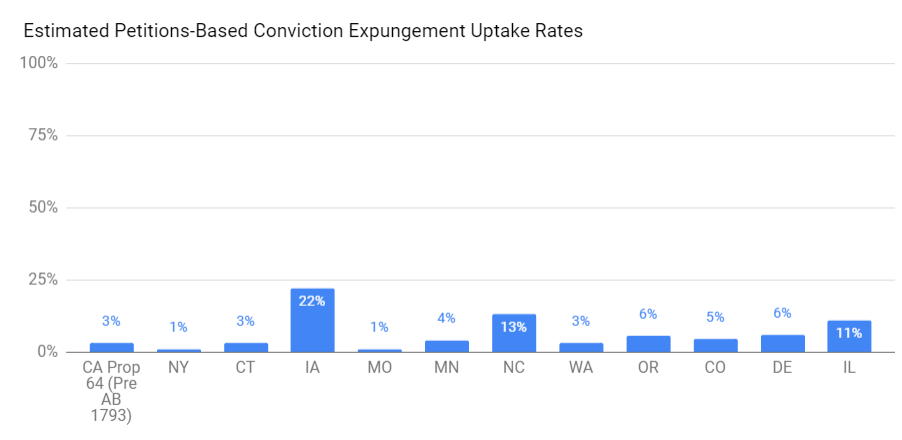What is the "Second Chance Gap"?
The "second chance gap" is the difference between eligibility and delivery of a person’s second chance.
The causes are often administrative failures such as lack of awareness, complicated criteria, informational deficiencies, inconsistent application of the rules and calculation mistakes; financial barriers and obligations also contribute to the gap. Clear criteria, delivery-informed legislation and automation are all ways to close the gap.
Examples include:
- Prison overstays: see e.g. Software Bug Keeps Inmates in AZ beyond their release date (Feb 2021) See also examples in Lousiana, Hawaii, California
- Clemency not granted: 3% of people the US Sentencing Commission identified as eligible for relief under the Obama Clemency Initiative received relief (Table 1)
- Compassionate release: 4% of Federal compassionate release applications result in releases, due to eligibility criteria that are “unclear” and “difficult to apply”
- Reclassification and Resentencing: 10% uptake of CA Prop 47 and 64 resentencing and reclassification (Table 2);
- Felony Reinfranchisement: 0-15% restoration of voting rights to people with felony records in most states that do not automatically restore the vote (Table 3);
- Expungement of Conviction Records: >10% uptake of convictions expungement in most studied states
 (see state reports)
(see state reports) - Expungement of Non-Conviction Records: 20-30M people have non-conviction records they could clear but not have done so. (Table 4-3)



